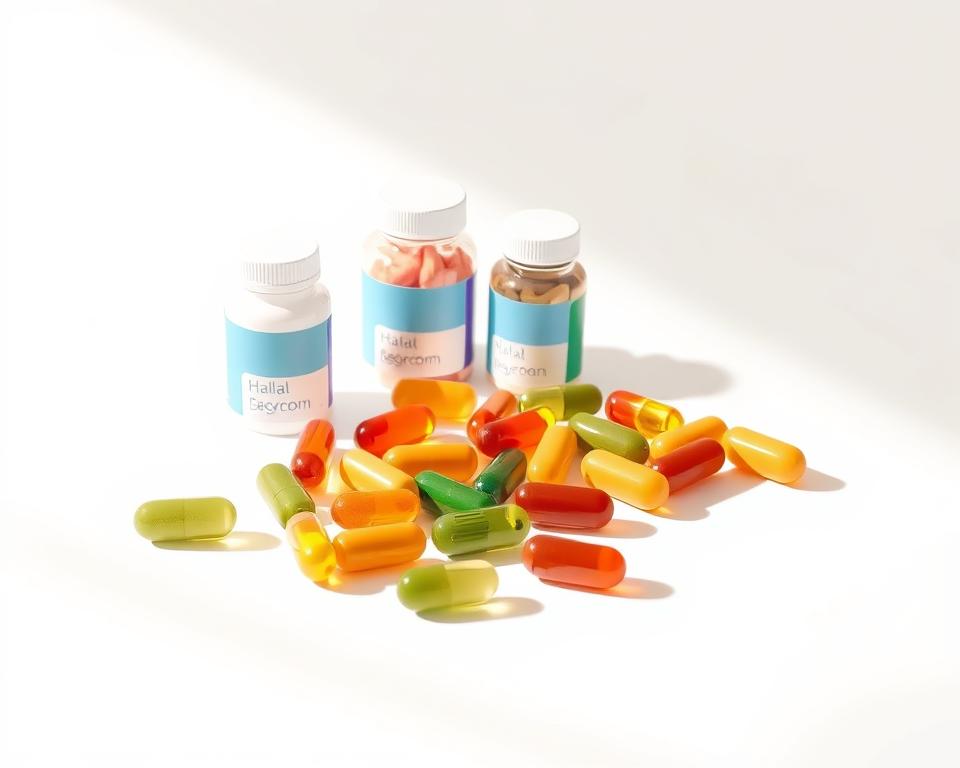Peniel Cleaning – Top Warehouse Cleaning Experts.
Could a well-maintained warehouse increase safety, cut costs, and improve operational speed beyond expectations?
Peniel Cleaning Pte Ltd has over 15 years of know-how in cleaning commercial and industrial spaces in Singapore. Address: 71 Ubi Crescent, #04-05 Excalibur Centre, Singapore 408571. The company provides custom cleaning plans for contemporary facilities.
The team includes 250+ trained cleaners with NEA and BizSafe certifications. They offer a wide range of services from deep floor cleaning to after-renovation clean-ups. Companies like Bio-Rad Laboratories and Coty Asia commend their timeliness and commitment to long-standing relationships.
They work from Monday to Friday, 8:30am–6:00pm, and Saturday from 9:00am–12:00pm. They keep pricing fair and prioritize eco-friendly choices. They guarantee their quality promise.
Keep reading to find out why picking Peniel Cleaning – warehouse cleaning services is a smart move. Your facility stays safe, clean, and efficient.
Why Choose Peniel Cleaning for Warehouse Cleaning Services
Peniel Cleaning has a long history and follows strict rules to ensure reliable service for Singapore’s warehouses. Service plans are tailored to site-specific needs to support smooth operations. Clients benefit from consistent hygiene and responsive support.
Credentials you can trust
Peniel Cleaning has been cleaning commercial and industrial spaces for over 15 years. NEA & BizSafe certifications plus MOM licensing confirm safety and compliance. These credentials demonstrate a commitment to compliant, safe operations.

Scale and trained workforce
250+ trained cleaners allow right-sized deployment for small or large sites. Their teams know how to use special cleaning machines like vacuums and pressure washers well. This experience means they work efficiently, saving time on repeat visits.
Client-first support & service guarantee
Customer support is a core focus. Issues are resolved quickly under a service guarantee. They also make cleaning plans that fit each client’s schedule and needs, keeping warehouses running smoothly. Happy customers often talk about the quick and professional service they get.
| Feature | Advantage | Evidence |
|---|---|---|
| NEA & BizSafe credentials | Meets Singapore regulatory and safety standards | Certification records on file |
| MOM licensed cleaning company | Legally compliant manpower deployment | Audit-ready documentation |
| 250+ trained cleaners | Stable staffing and rapid ramp-up | High client retention and repeat contracts |
| Pro operator training | Efficient cleaning of heavy-duty surfaces | Training & competency logs |
| Quality guarantee | Rapid issue resolution and quality assurance | Client feedback and remediation records |
Peniel Cleaning – warehouse cleaning services
For modern Singapore warehouses, Peniel delivers end-to-end industrial/commercial cleaning. Their service includes deep floor scrubbing, degreasing, using high-pressure washers, and cleaning racks and mezzanines. High-level dusting, disinfection, and post-renovation cleanup support safe, smooth operations.
They also cater to office-adjacent areas with services like carpet and upholstery cleaning, and taking care of restrooms and pantries. They even handle exterior landscaping. One vendor simplifies end-to-end site hygiene.
Overview of warehouse cleaning offerings
Clients receive detailed cleaning plans and regular maintenance. The team uses advanced equipment such as ride-on scrubbers and vacuums with HEPA filters. Capabilities include high-reach cleaning, loading-bay clearance, and concrete oil/grease treatment.
Their disinfection methods meet the hygiene standards needed locally. Post-reno programs target dust removal and surface clearance across storage and live zones. This makes Peniel a single-source partner for complex warehouse needs.
Tailored plans by warehouse type
They offer tailored packages for a variety of warehouses, including distribution centers and logistics hubs. Services can be daily, weekly, or monthly, with deep cleans as needed. Flexibility aligns with diverse operational rhythms.
Their services are designed to work around your schedule, including after-hours to avoid disrupting work. Coverage can scale during peak seasons or special events.
Coverage & hours in Singapore
Coverage: island-wide. Hours: Mon–Fri 8:30am–6:00pm; Sat 9:00am–12:00pm. They’re closed on Sundays and public holidays. Flexible after-hours scheduling is available on request.
| Service | Cadence | Best For |
|---|---|---|
| Daily janitorial + waste | Every workday | Distribution centers, logistics hubs |
| Heavy-duty floor scrubbing & degrease | Weekly or as-needed | Light industrial, manufacturing floors |
| Pressure washing (high-pressure) | Monthly or post-incident | Docks and exterior yards |
| Rack, mezzanine, high-ceiling cleaning | Monthly/quarterly | High-rack warehouses, cold stores |
| Targeted disinfection | Scheduled or post-event | Any warehouse |
| Carpet/upholstery care | Monthly or on-demand | Offices, staff areas |
| After-hours/emergency response | On request | 24/7 ops & post-reno |
Call or email for bookings, free quotations, and details on commercial services. Singapore facilities can contact the team directly. They provide quotes, do site evaluations, and create flexible plans to fit your operational requirements.
Industrial warehouse cleaning: Techniques and equipment
Large-site cleaning blends mechanized tools with proven processes. This mix keeps the spaces safe and helps them work better. Teams choose the right machines based on the type of surface, how much the area is used, and Singapore’s rules. Choosing wisely means less downtime and longer life for the warehouse.
Stubborn grime and oil require targeted steps. Auto-scrubbers/polishers remove buildup on concrete and tile. Pre-treatments with industrial degreasers precede machine passes. This lifts oil, hydraulic residue, and industrial soils.
To stop surfaces from wearing out, regular upkeep is needed. Sweeping and mopping every day take care of loose dirt. Machine scrubbing now and then keeps floors non-slip and makes them last longer.
High-pressure washing clears docks and exterior hardscapes. They also remove packed-in dirt from solid surfaces. Using water follows environmental rules in Singapore. Containment and drainage plans are implemented. This protects surrounding areas and waterways.
Industrial vacuums pick up big and tiny debris that can mess up the air and forklifts. Different vacuum setups take dust out of walkways and work areas. This supports safety and health compliance.
Specialty tools target difficult areas. High-reach dusters/brushes clean elevated zones. MEWPs/lifts provide safe access. That ensures safe access to corners and high points.
Safe cleaning needs planning with warehouse managers. It follows strict safety rules. Timing avoids peak activity where possible. Safety gear and helpers are a must when using lifting tools.
Deep cleaning for warehouses: Scope and benefits
Deep cleaning for warehouses isn’t just about daily sweeps. It targets concealed dust, grease, and buildup in high/low reach areas. Areas include racks, floors, and loading docks. Clear scope helps plan resources and safety measures.
Deep-clean scheduling
Deep cleaning is best done every few months. The right time depends on how busy the place is, what you store, and how you store it. After big changes, contamination, or before busy times is ideal.
Experts, like those from Peniel Cleaning, figure out the best cleaning times. They look at dust, traffic, and if you store food or medicine.
Health, safety, and productivity advantages
Deep cleaning reduces slip risks and deters pests. It also reduces dust that could damage goods or equipment.
Cleaner environments lift morale and reduce maintenance time. Lower contamination cuts rework and extends asset life. Overall, this supports smoother operations.
Post-renovation and seasonal deep-cleaning protocols
Post-renovation cleaning removes construction dust and residues. HVAC filters are checked and spaces verified safe. Re-rack/re-stock readiness is confirmed.
Seasonal cleaning counters moisture-related mold. It’s critical where humidity and rainfall are high. Aim: dry, clean conditions to protect inventory.
Warehouse sanitation & disinfection protocols
Warehouse sanitation is delivered via clear, defined practices. They satisfy local rules and daily hygiene requirements. Programs combine routine cleaning, targeted disinfection, and documentation. This ensures warehouses meet Singapore’s sanitation standards. Worker/visitor safety is improved.
Singapore-aligned sanitation standards
Teams follow guidelines from local agencies and use best practices. Priority zones: high-touch points, washrooms, break areas, shared equipment. Staff training aligns with national guidance. This maintains compliance.
Risk-based tailoring is applied per warehouse. This ensures a consistent quality that meets Singapore’s commercial facility standards.
Disinfection products and eco-friendly options
The core of disinfection protocols includes professional-grade products. Clients can choose eco-friendly options. These options are low in VOC and can break down naturally, supporting green goals.
In places with offices, carpet and furniture cleaning is available. These services keep work areas clean while being eco-conscious.
Frequency and documentation of sanitation cycles
Sanitation cadence is risk-based. High-touch areas are cleaned daily. Deeper cleaning is done weekly to monthly, depending on the risk level.
After services, clients get detailed reports. These reports cover cleaning logs, chemicals used, and checklists after service. This supports audits and compliance needs.
| Service Element | Typical Frequency | Documentation | Greener Choice |
|---|---|---|---|
| High-touch surface sanitisation | Daily | Sanitation log | Low-VOC sanitizer |
| Washroom/locker cleaning | Every day | Checklist with timestamps | Biodegradable agents |
| Deep disinfection (zones) | Weekly–monthly | Chemical record | Green-certified options |
| Carpet/upholstery sanitization | Monthly or as-needed | Service summary | Encapsulating, low-residue solutions |
| Post-incident sanitization | As needed | Incident report + verification | Hospital-grade/eco alternative |
Commercial cleaning services integrated with warehouse janitorial services
Peniel Cleaning combines commercial and warehouse cleaning for better care of work and production areas. Integration supports smooth operations and a presentable environment.
Every day, tasks are listed to keep the cleaning consistent and reliable. Checklists target high-traffic warehouse areas and office zones.
Daily duties & task inventory
Teams sweep, mop, and take out trash in warehouse zones daily. Loading areas are cleaned, spills addressed, and offices dusted.
Tracking tools help with restocking and tidying desks. Special lists make sure areas like pantries and lobbies are well cared for.
Coordination with facility management and shifts
Schedules align to operating hours to reduce disturbance. Off-hour/weekend services avoid peak activity.
Regular communication speeds issue resolution. Routine inspections refine plans and task lists.
Keeping restrooms and common areas optimal
Restrooms receive thorough cleans, fresh supplies, and odor control. These steps help avoid germs spreading.
Break areas are disinfected, with carpets cleaned as required. Clean shared spaces support wellness and hygiene.
Professional cleaners — training & compliance
Peniel Cleaning focuses on credentials and ongoing training for warehouse safety and efficiency. Teams adhere to NEA BizSafe and MOM guidance. Clients receive compliant, responsible service consistently.
NEA, BizSafe, and MOM-related compliance
Regular audits verify environmental/health standards. They have the right licenses and certifications for chemical handling. This maintains safe, hygienic practices.
Staff training, PPE, and safety briefings
Training includes machine use, safe chemical handling, and special site rules. PPE (gloves, masks, etc.) is assigned per risk. This keeps workers safe on the job.
New-site onboarding includes safety/emergency briefings. Toolbox talks continue to prevent incidents and keep teams informed.
Quality checks and feedback
Quality is checked through inspections and reports. Client feedback informs continuous improvement. This sustains high service quality.
A clear guarantee and hotline enable fast fixes. Regular meetings ensure everyone is accountable and results are consistent.
Affordable warehouse cleaning without compromising quality
Peniel Cleaning offers affordable warehouse cleaning in Singapore. Before starting, clients understand all details clearly. They visit the site and assess needs for a fair proposal.
Custom pricing & clear quotes
Pricing is tailored per facility. Inputs include size, scope, cadence, and special requirements. Free consults and itemized quotes align with budget/timeline.
Integrated packages that reduce cost
Bundles reduce duplication and save time. They offer packages that include various cleaning services under one contract. This saves money and prevents expensive repairs later on.
Client value case snapshots
Clients like Bio-Rad Laboratories and Coty Asia value their ongoing relationships. They note stable crews, swift responses, and tailored plans. These cases highlight how Peniel Cleaning maintains predictable costs and high-quality cleaning.
| Client | Bundle | Key Benefit | Typical Range (SGD) |
|---|---|---|---|
| Bio-Rad Labs | Deep cleaning, disinfection, scheduled janitorial | Improved lab-area sanitation, consistent staffing | Custom per project |
| Coty Asia Pacific | Floor care + rack cleaning + preventive maintenance | Reduced floor repairs, extended equipment life | Project-based |
| Mid-size logistics hub | Daily janitorial, monthly deep clean, pest control | Reduced downtime and simpler billing | $300–$1,500 (smaller commercial analogues) |
| Regional distribution center | Integrated maintenance packages with disinfection | Single-point management, cost predictability | Custom per project |
Choosing the best warehouse cleaning company in Singapore
Your cleaning partner impacts safety, uptime, and cost. This guide will help you pick carefully. It focuses on clear evaluation criteria, comparing service scopes, and consultation questions.
Start evaluating with the company’s experience and certifications. Look for those with 15–20+ years in industrial cleaning. They should have NEA and BizSafe credentials, and comply with MOM where required.
Review testimonials, Singapore Finest listings, and staffing data. See how many people they employ and their retention rates to measure reliability.
When comparing services, check if they can handle both tough and regular cleaning tasks. Make sure they offer degreasing, high-pressure washing, and cleaning for racks and mezzanines. They should also handle post-renovation cleanup, carpet care, and zone disinfection.
Ask about greener products and specific equipment. This ensures they meet your needs and values.
During consults, clarify deliverables and costs. Ask about their certifications and for references from similar projects in Singapore. Probe tools, solutions, eco options, and flexibility.
Also cover guarantees and remediation. Have them provide written guarantee details, documentation practices for issues, and response times. Understand their pricing structure, what’s included in quotes, and if they offer maintenance packages.
Keep this as a checklist while selecting a warehouse cleaner. With disciplined evaluation, service comparison, and pointed questions, you’ll find the right cleaning company for you.
Final Thoughts
Peniel Cleaning is your go-to for top-notch warehouse cleaning services in Singapore. 15+ years plus NEA/BizSafe credentials mean strong readiness. A 250+ skilled crew tackles heavy-duty floor care and high-pressure washing.
This team offers flexible times for cleaning, detailed reports of their services, and uses eco-friendly products. They mix everyday cleaning with special services like after-renovation clean-ups. This approach helps keep workers healthy, makes them more productive, and keeps your assets in great shape.
If reliability matters, review Peniel’s credentials. They offer a free consultation and site visit to create a cleaning plan just for you. Transparent pricing and quality commitment deliver results aligned with Singapore regulations.









